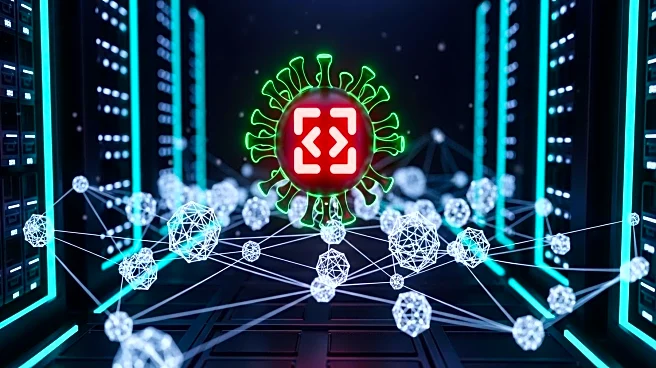What is the story about?
What's Happening?
Social engineering attacks have evolved significantly, focusing on exploiting human behavior rather than technical vulnerabilities. These attacks have become more strategic and precise, targeting individuals within companies who have extensive privileges. Cybercriminals use tactics such as phishing emails to create stress-induced problems, leading to strategic deception. The effectiveness of these attacks is demonstrated by high infection rates, as victims are deceived into executing malicious commands. The rise of AI-driven threats and self-developed malware families further underscores the sophistication of these attacks.
Why It's Important?
The evolution of social engineering attacks poses a significant threat to cybersecurity, as traditional security measures are often insufficient to counteract these tactics. By targeting human behavior, cybercriminals can bypass technical defenses and gain access to sensitive data and systems. This shift in attack strategy highlights the need for enhanced security training and awareness programs to protect individuals and organizations. The impact on industries and businesses is profound, as breaches can lead to financial losses, reputational damage, and compromised data integrity.
What's Next?
Organizations are likely to increase investment in cybersecurity training and awareness programs to mitigate the risks associated with social engineering attacks. There may be a push for developing more advanced security technologies that focus on behavioral analysis and anomaly detection. Additionally, collaboration between cybersecurity experts and psychologists could lead to innovative solutions that address the human element in security breaches. Stakeholders, including businesses and government agencies, will need to adapt their strategies to counteract these evolving threats.
Beyond the Headlines
The ethical implications of social engineering attacks are significant, as they exploit human psychology to achieve malicious goals. This raises questions about the responsibility of organizations to protect their employees and customers from such manipulative tactics. Furthermore, the use of AI-driven threats introduces concerns about the role of technology in facilitating cybercrime. Long-term shifts may include a greater emphasis on ethical hacking and the development of technologies that prioritize user privacy and security.
AI Generated Content
Do you find this article useful?














